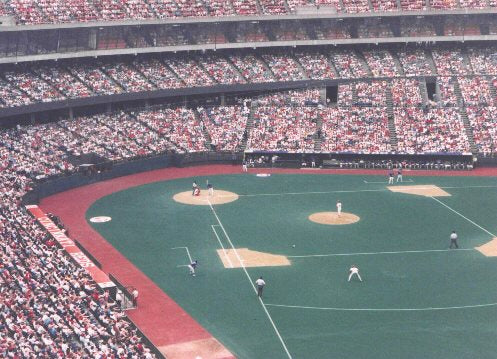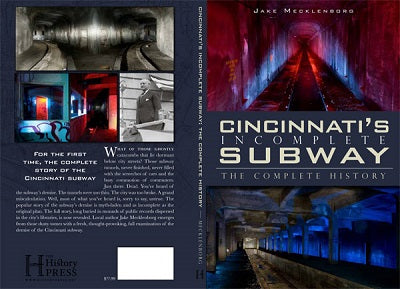It is generally agreed upon by baseball historians that the Big Red Machine era of the Cincinnati Reds started in 1970 with the hiring of former minor league coach and manager George “Sparky” Anderson. However, it could be argued that the roots of that team stretch back to the early 1960s and several key events that would reshape the organization.
Change in ownership
Long-time owner Powell Crosley passed away early in 1961, missing the team’s World Series appearance later that year. The following spring, Bill DeWitt bought the team. On the field, things were great. Though the Reds lost the 1961 Fall Classic to the New York Yankees, the team remained competitive throughout the decade, thanks to an exceptional farm system.
It was this minor league system that produced future Machine parts Johnny Bench, Tony Perez, home-grown Pete Rose, and Dave Concepcion. The team’s winning direction was further aided by the hiring of Bob Howsman as general manager in 1967. Howsman had previously guided the St. Louis Cardinals in the same role. Previous to that, he owned the Denver Broncos of the American Football League (AFL). His family also owned the Denver Bears minor league baseball team. The final piece of the puzzle fell into place with the proposed construction of a stadium on the city’s riverfront.
Stadium issues
The Reds for years had been unhappy with Crosley Field largely due to the limited availability of parking exacerbated by an increasing number of automobiles in the area after World War II. Crosley Field was also becoming outdated. In the late ‘50s and early ‘60s, the Reds threatened to leave for New York. The Big Apple had been abandoned by the Dodgers and Giants in 1957 and wanted a new team. Improvements around the ballpark, and the threat of the Continental League, put a stop to that idea, but it was merely a bandage. A few years later, the goings-on in professional football would come to impact the Reds.
Paul Brown, deposed as the head coach of the team he helped create, the Cleveland Browns, was looking to get back into pro football as an owner after two years away from the game. With the help of then-Ohio governor James Rhodes, Brown settled on Cincinnati as the location for his new franchise.
As UC’s Nippert Stadium was inadequate to permanently host a team, efforts began to have a new, multi-purpose stadium built downtown on the riverfront. The new facility would become the home of the Reds as well as the city’s pro football team. Without that stadium, Cincinnati would not have been awarded a franchise in the AFL (which had just announced a merger with the National Football League).
It all comes together
By 1970, the pieces were in place: talented, experienced players, a savvy GM, and a brand new ballpark. The Reds clinched the NL West crown that year and hosted the League Championship Series (LCS) in their new ballpark. They dispatched the Pirates three games to none but lost the World Series to the Baltimore Orioles in five games.
The Reds fell below .500 in 1971 and finished fourth in the West. The next year, though, they bounced back, won the division, and again knocked off the rival Pirates to win the pennant. However, the Reds fell to the A’s in seven in the World Series. The Reds won their division the following year as well but couldn’t get past the Mets in the LCS.
Back-to-back World Series
In 1974, the Reds finished second before storming back in 1975 to win 108 games, the division, the pennant, and finally, the World Series, with one of the most powerful teams in baseball history.
What’s interesting about the 1975 World Series is that it contained what many consider to be the greatest baseball game ever played, that being Game Six played in Boston. Leading the series three games to two, the Reds found themselves in an extra-innings battle that ended with a bottom of the 12th, game-winning home run by Red Sox catcher Carlton Fisk. For years, Boston fans hailed it as the best moment in team history, even though they lost the next game and the series. Boston won four World Series titles in the 21st century, likely pushing Fisk’s homer down the list of best moments in franchise history.
The Reds, meanwhile, still had something to prove, despite capturing their first world championship since 1940. In 1976, they marched right back to the World Series, where they swept the powerful New York Yankees.
The team remained competitive through the end of the decade, making it to the LCS in 1979, where they bowed to Wille Stargell and the Pirates “Family.” In the ‘80s, the realities of baseball, mostly age and free agency, caught up with the team. The team fell to last place in 1982 and once again began the slow process of building a World Series winner.



51 comments
Thomas
I NEED A HELP HOW TO RECOVER MY LOST CRYTOPCURRENCY
I know many things could have gone wrong this past few days investing online and getting burnt. I was also in your shoes when I invested into a binary option where I got scammed of $3000 of BTC but thanks to the help of TSUTOMU SHIMOMURA They assisted me in recovering back my lost BTC. I initially didn’t trust them but I was referred by a friend who I trust well. I was able to get my refund within the space of two weeks. Thanks to TSUTOMU SHIMOMURA, you can also contact them via WEBSITE: https://tsutomushackexpert.com/ or Email address support@tsutomushackexpert.com, and I’m sure you will be happy you did.
Jane Marcus
THE BLACK MIRROR IS POWERFUL. Who could believe that I would be rich someday? but Baba Powers made it possible with the black mirror which I purchased from him. Thanks to him because the black mirror reveals the secrets, unlock the power. I came across various testimonials which state how the black mirror has been of good and great help to them. I also contacted Baba Powers on his email; Babablackmirrors@gmail.com to also experience it for myself. I am really happy to get the black mirror. Thank you Baba Powers for your special black mirror. You can also view his website and you will see amazing testimonies from people that he has helped. His website is; Babablackmirrorsofpowers.blogspot.com I urge you now to contact him and you will never regret it.
Wendy Gunn
LORD MEDUZA IS THE BEST SPELL CASTER ONLINE
It’s an honor to share my testimony with the world. You merit all the accolades that mention you. Lord Meduza has been a gift to me since our meeting online. He is the only one that knows everything about creating spells. I adore him immensely for his kindness, compassion, integrity, and the support he offers to everyone who interacts with him. Without Lord Meduza, I wouldn’t have survived this difficult situation. His magic turned me into a Lottery winner of £177 Million Pounds, transforming my entire life into something beautiful and extraordinary. The numbers he provided for the lottery were transformative, elevating me from grass to grace, and I want to express my eternal gratitude to him. Thank you, sir, for being a source of help to those in need. Anyone who reads this article and requires assistance can reach him through his Email: lordmeduzatemple@hotmail.com or WhatsApp +18079072687 as he is unmatched in crafting spells.
Anthony
Personal growth is important for achieving success in life. All these words were shared with me by Lord Meduza, who performed a spell reading for me and created a lottery spell that turned me into a lottery champion of $112 million here in Arizona. Within 48 hours of adhering to all of Lord Meduza’s divine instructions, he granted me the chance to use the divine lottery numbers to enter the lottery after I bought my ticket in Tempe. A week later, I was informed that I had become the fortunate Jackpot winner of the game, and this was all made possible by Lord Meduza. Kindly express my gratitude to him for his impactful words and actions. For a transformative opportunity, contact him via
Email: Lordmeduzatemple@hotmail.com
Call/WhatsApp: +1 807 907 2687
You can also search him on Facebook via: Lordmeduzatemple
oliver james
I got cured miraculously from HPV Virus using herbs by Dr. Guba who sent me some herbal medicines and I used them as instructed within two weeks. Before I knew I was totally healed, I visited my doctor for a medical examination. Behold, I am negative. I introduced this great doctor to a couple of infected friends who also tried the medication and they were cured as well . Please if you have this virus and you have tried so many things or have been deceived severally, here is your final solution for you send him an email via: Drgubahealingherbs@gmail.com or WhatsApp: + 234 816 238 8034 or website: https://drgubahealingherbs.wixsite.com/guba-healing-herbs
Leave a comment
This site is protected by hCaptcha and the hCaptcha Privacy Policy and Terms of Service apply.